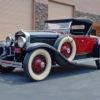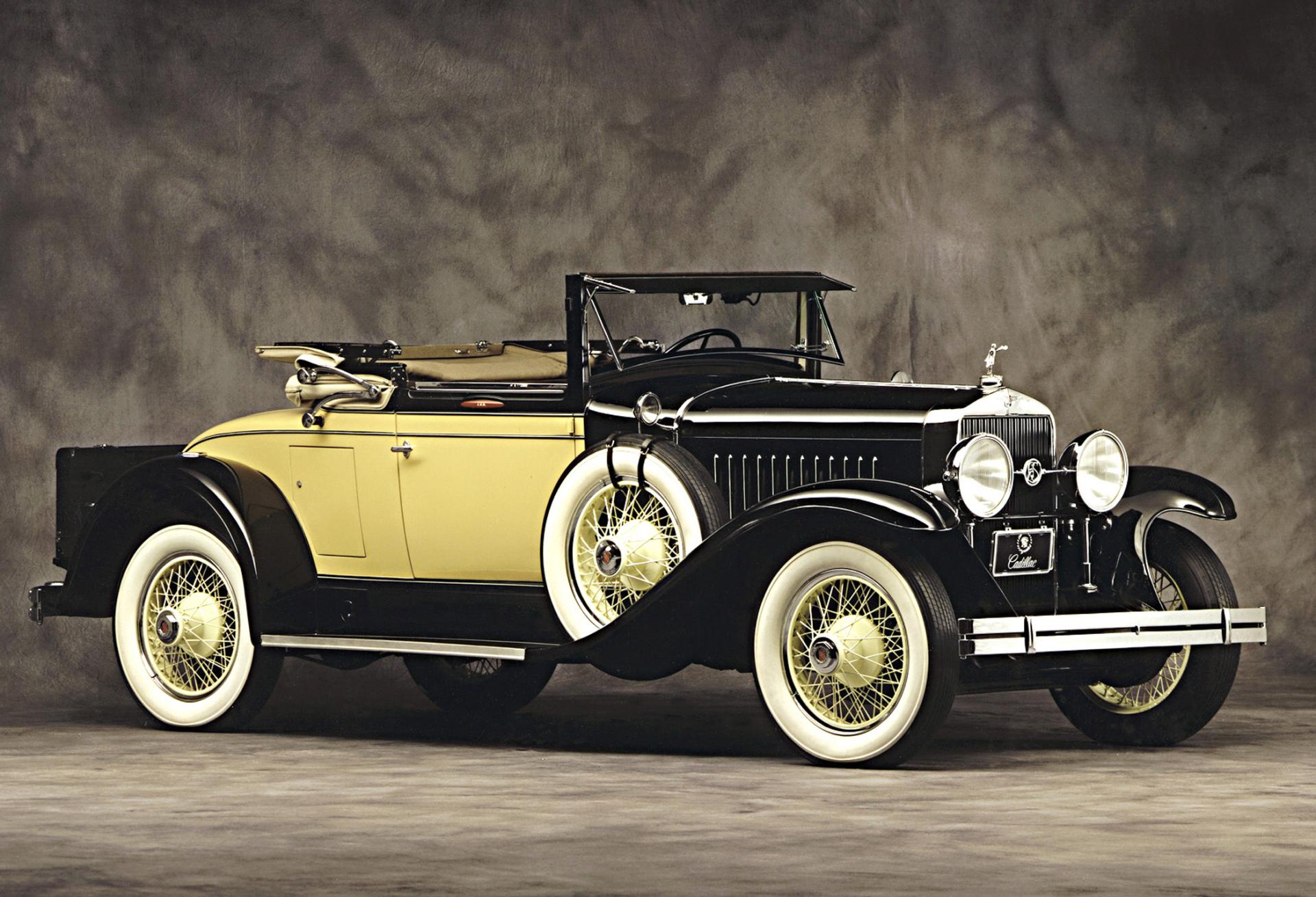LaSalle Models & History (1927)
his new line from General Motors was introduced to fill the gap between the Buick and the Cadillac. As Oakland (later Pontiac) was a companion car to Chevrolet, LaSalle was to be the companion car to Cadillac. It boasted Cadillac quality in a less expensive package. It featured the following distinctives:
Models
- LaSalle offered the following models by Fisher
- roadster
- phaeton
- coupe
- convertible coupe
- victoria
- five passenger sedan
- LaSalle offered the following models by Fleetwood
- coupe
- sedan
- town cabriolet
- Mid-year offering by Fisher
- dual cowl sport phaeton
- town sedan
- seven-passenger sedan
- five-passenger imperial
- seven-passenger imperial
- Mid-year offering by Fleetwood
- transformable town cabriolet
Body
- Body features included:
- High, slim radiator set low in the frame
- Twelve louvers, centered in hood panels
- Twin cowl vents on roadster and phaeton
- Bullet-shaped head and cowl lights
- Posts under headlights to conduct wiring
- Monogram rod between headlights
- On roadster and phaetons the cut-down effect of the belt line was accentuated by double molding curving upward onto the cowl
- Rear window in coupe and rear curtain in convertible coupe could be opened for communication with rumbleseat passengers
- The four-door town sedan was close-coupled, with no rear quarter windows
Chassis:
- Similar to 1927 Cadillac with some differences
- Smaller size
- Fuel feed by manifold vacuum, assisted by engine driven vacuum pump
- Mechanical brakes with 14-inch drums on all wheels
- Rear semi-elliptic springs shackled at both ends, rear shackle with ball and socket joint
- Front wheels run on ball bearings
- Watson stabilators
Drive Line:
- Multiple (11) disc clutch
- Three-speed selective transmission
- Torque tube drive
- 3/4-floating rear axle with helical bevel gear and pinion
Engine:
- The compensated two-plane crankshaft in the V-63 engine and the separate starter and generator on the 314 engine had been major changes, but the basic engine remained the Type 51 design.
- The 303 engine was a new basic design, with offset blocks and side-by-side connecting rods (babbitted)
- The outward appearance was the same as the final version of the 314 engine except that the 303 starter was horizontal, mounted behind the flywheel on the right side
- The oil filter was mounted on the engine rather than the firewall
- The carburetor was similar to Cadillac, but reversed
- The oil level indicator was mounted behind the right-hand block
- A common manifold, connecting the two exhaust manifolds at the front of the engine, fed to a single muffler at the left side of the chassis
I.D. DATA
- Serial numbers were not used on the 1927 LaSalle
- Engine numbers stamped on a plate on the front face of the dash and on the crankcase just below the water inlet on the right side
- Starting: 200001. Ending: 212000.
STYLE
| Fisher 125″ wheelbase | |||||
|---|---|---|---|---|---|
| Style No. | Doors | Body Type | Seating | Price | Weight |
| 1168 | 4 | Phaeton | 4 | $2495 | 3770 lb |
| 1168-8 | 4 | Sport Phaeton | 4 | $2975 | 4190 lb |
| 1169 | 2 | Roadster | 2/4 | $2525 | 3755 lb |
| 7410 | 2 | Coupe | 2/4 | $2585 | 3770 lb |
| 7400 | 2 | Convertible Coupe | 2/4 | $2635 | 3770 lb |
| 7390 | 2 | Victoria | 4 | $2635 | 3985 lb |
| 7380 | 4 | Sedan | 5 | $2685 | 4090 lb |
| 7420 | 4 | Town Sedan | 5 | $2495 | 4065 lb |
| Fisher 134″ wheelbase | |||||
|---|---|---|---|---|---|
| Style No. | Doors | Body Type | Seating | Price | Weight |
| 8090 | 4 | Imperial | 5 | $2775 | 4315 lb |
| 8060 | 4 | Sedan | 7 | $2775 | 4345 lb |
| 7070 | 4 | Imperial | 7 | $2875 | 4570 lb |
| Fleetwood 125″ wheelbase | |||||
|---|---|---|---|---|---|
| Style No. | Doors | Body Type | Seating | Price | Weight |
| 3110 | 2 | Coupe | 2 | $4275 | 5000 lb |
| 3120 | 4 | Sedan | 5 | $4475 | 5100 lb |
| 3130 | 4 | Town Cabriolet | 5/7 | $4500 | 5100 lb |
| 3051 | 4 | Transformable Town Cabriolet | 5/7 | $4700 | 5100 lb |
ENGINE
- Engine type: 90° V-8 L-head
- Block: Cast iron offset on copper/aluminum crankcase
- Bore & Stroke: 3-1/8″ x 4-15/16″
- Displacement: 303 cu. in.
- Compression ratio: 4.8 : 1 (5.3 : 1 optional)
- Horsepower: 75
- SAE/NACC Horsepower: 31.25
- Main bearings: 3
- Valve lifters: mechanical with rollers riding on cam
- Carburetor: Made by Cadillac under C. F. Johnson patents
- Torque Compression: 90-92 psi at 1000 rpm and 4.8:1 ratio
- Torque Compression: 105-107 psi at 1000 rpm and 5.3:1 ratio
CHASSIS
| Feature | 125″ Wheelbase | 134″ Wheelbase |
|---|---|---|
| Overall length | 185″ | 196-5/8″ |
| Front/Rear Tread | 56″ | 56″ |
| Tires | 32×6.00 (6.00-20) | 32×6.20 (6.50-20) |
DRIVETRAIN
- Selective sliding gear transmission, in unit with engine
- Speeds: 3-Forward, 1-Reverse
- Left-hand drive, center controls (rhd opt)
- Multiple disc clutch, 11 discs
- Shaft drive (torque tube) 3/4-floating rear axle, helical bevel drive
- Overall ratio: 4.54:1 std (4.07:1, 4.91:1 opt)
- Mechanical brakes, 14″ drums on four wheels
- Artillery wheels (wire and disc opt)
- Wheel size: 20″







